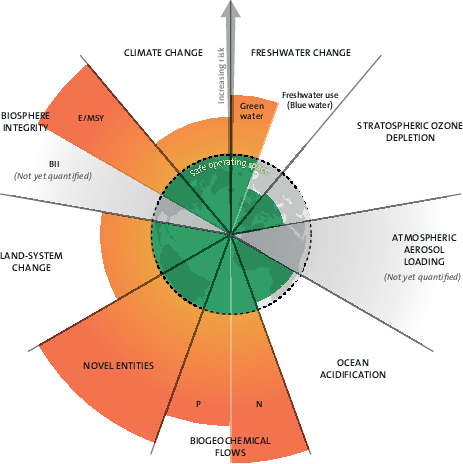1 What is the Planetary Boundaries model?
Everything is interconnected
Human lives are irrevocably linked with all other living beings; planetary systems link and interact; life is enlaced with life and wider ecological processes across the world. For an educator who is embedding sustainability into teaching, such connectivity is a gift. Sustainability can emerge organically from almost any topic imaginable. You could rush into a seminar at random and yell, “How does this relate to sustainability?” and the question would probably be relevant and fruitful. Yet this complexity can also feel overwhelming.

The Planetary Boundaries model (Rockström et al. 2009) is one way to simplify things — by focusing on core planetary processes. Proposed in 2009, the model has grown influential in both environmentalist and policy circles. It identifies nine key systems which are at risk due to human activity, endangering the Earth’s habitability for most known life.
Inevitably, the Planetary Boundaries model is also open to interpretation and misinterpretation. For example, planetary boundaries are related to the concept of tipping points: thresholds that trigger massive and often irreversible change once crossed. But although the creators of the Planetary Boundaries model have proposed measurable thresholds, they never really meant these to represent tipping points (Rockström, Richardson, and Steffen 2017). Tipping points are by nature very difficult to identify with confidence until it is too late (see Music Case Study for complexity literacy).
The planetary boundaries model has also been criticised. For example, a Resource-Producer-Consumer-Waste (RPCW) model has recently been proposed. According to the RPCW approach, the Planetary Boundaries model is too focused on overall levels of consumption and pollution (e.g. freshwater uses, or greenhouse gas emissions), and needs more emphasis on distribution and waste management (Downing et al. 2020)

